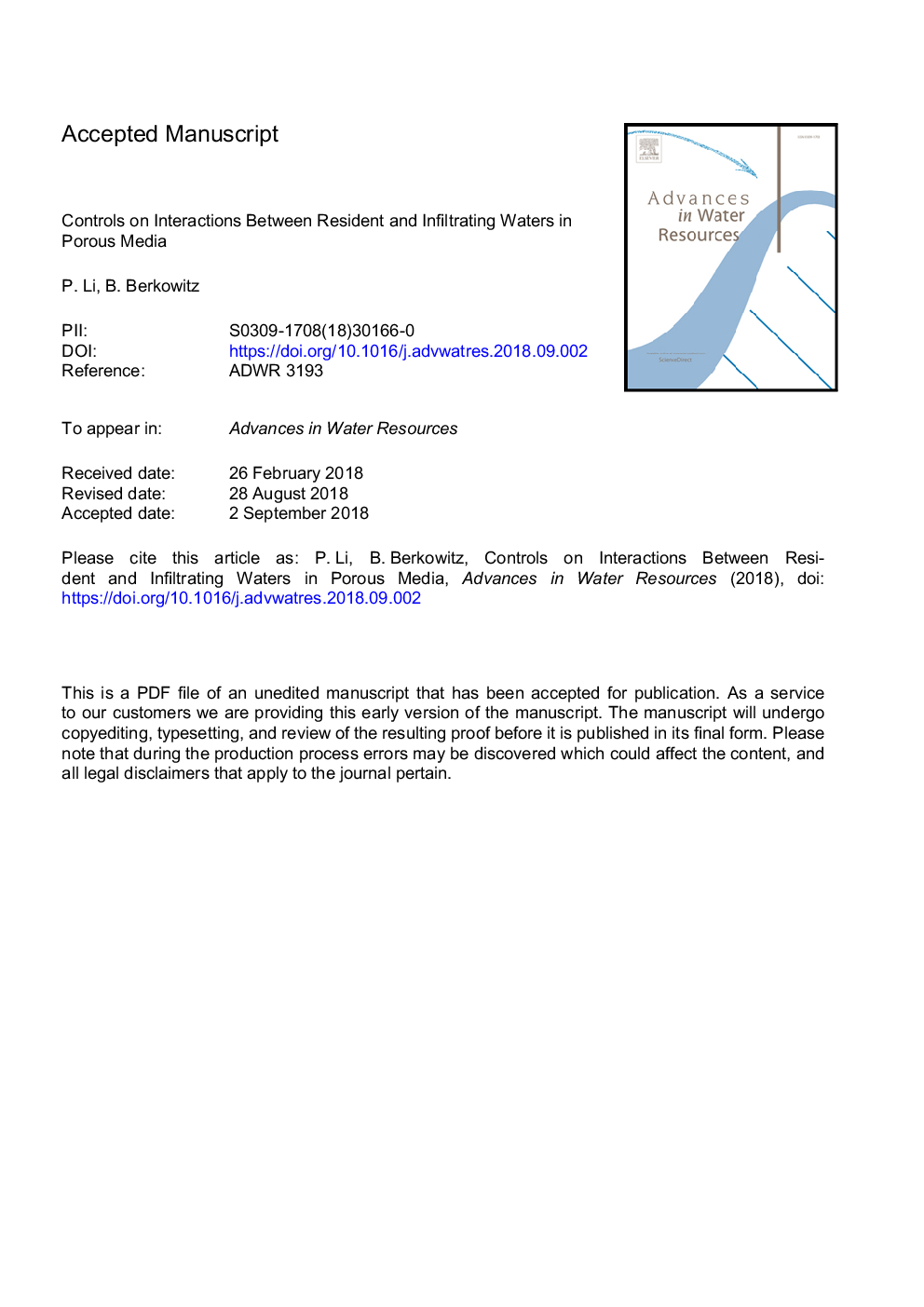| Article ID | Journal | Published Year | Pages | File Type |
|---|---|---|---|---|
| 10117733 | Advances in Water Resources | 2018 | 38 Pages |
Abstract
We quantify the poorly-understood interactions between resident and infiltrating water during drainage-imbibition cycles in heterogeneous porous media, via a 2-D (and 3-D) lattice Boltzmann simulation method. These interactions are critical in the (partially saturated) soil layer, which is the interface from land surface to groundwater that controls the fate and transport of infiltrating water and chemicals to aquifers. The results demonstrate the sensitivity of these dynamic interactions to the contact angle, boundary flux condition, body force, and porosity. We show that the body force and contact angle have relatively small effects on interactions in the capillary flow regime, while the boundary flux and porosity alter the amount and distribution of resident and infiltrating water significantly. Moreover, air-water interfaces are shown to be dynamically concave/convex, determined by both contact angle and pore geometry. Our analysis demonstrates the coexistence of distinct pockets of resident and infiltrating water, and provides pore-scale, mechanistic evidence that supports field observations of soil water zones with different chemical signatures.
Keywords
Related Topics
Physical Sciences and Engineering
Earth and Planetary Sciences
Earth-Surface Processes
Authors
P. Li, B. Berkowitz,
